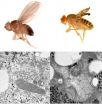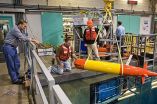(Press-News.org) TORONTO, Ont., Nov. 2, 2010-Severely injured patients should be transported directly from the scene of an accident to a trauma center, even if it means bypassing a closer hospital, according to new research that shows this results in a nearly 25 per cent lower death rate.
However, even though 80 to 85 per cent of people in North America live within a one-hour drive or flight of a trauma center, 30 to 60 per cent of severely injured patients are still taken to the nearest hospital.
Researchers led by Dr. Avery Nathens, trauma director at St. Michael's Hospital in Toronto, identified 11,398 patients who were severely injured in Ontario between 2002 and 2007. Of those, 66 per cent were transported directly to one of Ontario's nine adult trauma centres and 30 per cent were transferred to trauma centres after being assessed at the closest hospital.
Overall, 18 per cent of the patients died, or 2,065 people. Four per cent of patients died before they could be transferred to a trauma centre - or 22 per cent of all deaths. Previous studies have not included those patients, so doctors have assumed the death rate is the same for people taken directly to trauma centres and those who are transferred after first being assessed at a non-trauma centre.
By considering the outcome of all patients, Nathens found the risk of dying is 24 per cent greater if a patient first stops at a non-trauma centre. His study will appear in the December issue of the Journal of the American College of Surgeons and is available on-line.
About half of the patients died more than 2-1/2 hours after arriving at a non-trauma centre, suggesting that ways to identify these patients earlier and having more rapid access to ambulance service to transfer them might make a difference.
"Trauma centres save lives," Nathens said. "We acknowledge that access to these trauma centres can be a challenge, given Ontario's geography. So we have to find innovative ways to make sure that hospitals and providers who receive these patients are equipped with the highest level of skills and resources to provide to provide optimal care and a means to transfer them ASAP."
INFORMATION:
St. Michael's Hospital is one of 11 Ontario hospitals designated by the Ontario Ministry of Health and Long-Term Care as a Level 1 trauma centre. Level 1 Trauma Centres are mandated to care for the most severely injured patients within defined geographic areas.
A Trauma Expert Panel appointed by the Ontario Ministry of Health and Long-Term Care recommended in 2006 that the provincial government develop five classes of trauma services and require that each hospital be able to perform its level of care. The panel also recommended the development of target times and criteria for which trauma patients should be transferred to trauma centres.
About St. Michael's Hospital
St. Michael's Hospital provides compassionate care to all who enter its doors. The Hospital also provides outstanding medical education to future health care professionals in more than 23 academic disciplines. Critical care and trauma, heart disease, neurosurgery, diabetes, cancer care, and care of the homeless are among the Hospital's recognized areas of expertise. Through the Keenan Research Centre and the Li Ka Shing Knowledge Institute, research at St. Michael's Hospital is recognized and put into practice around the world. Founded in 1892, the Hospital is fully affiliated with the University of Toronto.
For more information or to speak to Dr. Nathens, please contact:
Leslie Shepherd
Senior Public Relations Specialist
St. Michael's Hospital
Phone: 416-864-6094 or cell 647-300-1753
www.stmichaelshospital.com
shepherdl@smh.ca
Severely injured should go directly to trauma center: Research
Risk of dying is 24 percent greater if a patient first stops at a non-trauma center
2010-11-03
ELSE PRESS RELEASES FROM THIS DATE:
Scientists at IRB Barcelona discover a new protein critical for mitochondria
2010-11-03
A study by the team headed by Lluís Ribas de Pouplana, ICREA professor at the Institute for Research in Biomedicine (IRB Barcelona), has been chosen as "Paper of the week" in the December issue of the Journal of Biological Chemistry, which is already available online. The article describes the discovery of a new protein in the fly Drosophila melanogaster (fruit fly) that is crucial for mitochondria. The removal of SLIMP in these flies leads to aberrant mitochondria and loss of metabolic capacity, thus causing death.
The study, whose first author is Tanit Guitart, a PhD ...
Brain's ability to selectively focus/pay attention diminishes with age
2010-11-03
A University of Toronto study shows that visual attention -- the brain's ability to selectively filter unattended or unwanted information from reaching awareness -- diminishes with age, leaving older adults less capable of filtering out distracting or irrelevant information.
Further, this age-related "leaky" attentional filter fundamentally impacts the way visual information is encoded into memory. Older adults with impaired visual attention have better memory for "irrelevant" information. The research, conducted by members of U of T's Department of Psychology, will ...
Shift work linked to higher risk of work injury: UBC study
2010-11-03
Canadians who work night and rotating shifts are almost twice as likely to be injured on the job than those working regular day shifts, according to a study by researchers at the University of British Columbia.
The study, published in the current issue of the Scandinavian Journal of Work, Environment and Health, examined data on more than 30,000 Canadians collected as part of Statistics Canada's Survey of Labour and Income Dynamics and compared results between workers involved in different types of shift work from 1996-2006. It shows that while the overall rate of work ...
Every person emits 2 tons of CO2 a year through eating
2010-11-03
Every person emits the equivalent of approximately two tonnes of carbon dioxide a year from the time food is produced to when the human body excretes it, representing more than 20% of total yearly emissions. That is what a study by the Universidad de Almería says, confirming for the first time that human excrements contribute to water pollution, primarily with nitrogen and phosphorus.
A team of researchers from the Universidad de Almería (UAL) has estimated the environmental impact of the Spanish diet and role that human excrements play in the life cycle of food. It is ...
Algae for biofuels: Moving from promise to reality, but how fast?
2010-11-03
A new report from the Energy Biosciences Institute (EBI) in Berkeley projects that development of cost-competitive algae biofuel production will require much more long-term research, development and demonstration. In the meantime, several non-fuel applications of algae could serve to advance the nascent industry.
"Even with relatively favorable and forward-looking process assumptions (from cultivation to harvesting to processing), algae oil production with microalgae cultures will be expensive and, at least in the near-to-mid-term, will require additional income streams ...
Exposure of humans to cosmetic UV filters is widespread
2010-11-03
Amsterdam, 2 November, 2010 - An investigation conducted in the context of the Swiss National Research Programme (NRP50), Endocrine Disrupters: Relevance to Humans, Animals and Ecosystems, demonstrates for the first time that internal exposure of humans to cosmetic UV filters is widespread.
In the course of the Summer and Fall 2004, 2005 and 2006 (3 cohorts), human milk was sampled by mothers who had given birth at the University Women's Hospital in Basel. The participants filled out a detailed questionnaire with general questions and, as special feature, in depth questions ...
New long-range undersea robot goes the distance
2010-11-03
Over the past decade, the undersea robots known as autonomous underwater vehicles (AUVs) have become increasingly important in oceanographic research. Today's AUVs fall into two groups: 1) propeller-driven vehicles that can travel fast and carry lots of instruments, but are limited to expeditions of only a few days; and 2) "gliders," which can stay at sea for weeks or even months at a time, but cannot travel very quickly. MBARI engineers recently demonstrated a new super-efficient AUV that combines the best of these two approaches. This new long-range AUV (LRAUV) can travel ...
Mayo Clinic Proceedings: November highlights
2010-11-03
The November issue of Mayo Clinic Proceedings includes three articles with leading research, highlighted below.
Khat Chewing Increases Risk of Stroke and Death in Patients With Acute Coronary Syndrome
ROCHESTER, Minn. -- Researchers found that people who chew khat and present with acute coronary syndrome had significantly higher rates of death, cardiogenic stroke, and stroke complications, despite having lower cardiovascular risk profiles.
"The leaves of khat, a leafy green shrub, are chewed habitually for euphoric and stimulating effects. The main ingredients, ...
First peer-reviewed study finds BPA levels in US foods 1,000 times less than limits
2010-11-03
Note to journalists: Please credit the journal or the American Chemical Society as publisher of this report.
WASHINGTON, Nov. 2, 2010 — For the first time in the United States, researchers are reporting in a peer-reviewed scientific journal today detection of Bisphenol A (BPA) in fresh and canned food as well as food wrapped in plastic packaging. The amounts in the limited sample, however, were almost 1,000 times lower than the "tolerable daily intake" levels set by the U.S. Environmental Protection Agency (EPA) and the European Food Safety Authority (EFSA). Their report ...
Mouse model confirms mutated protein's role in dementia
2010-11-03
A team of scientists from Japan and the University of California, San Diego School of Medicine have created a new mouse model that confirms that mutations of a protein called beta-synuclein promote neurodegeneration. The discovery creates a potential new target for developing treatments of diseases like Parkinson's and Alzheimer's.
The work is published in today's issue of Nature Communications. Lead author is Makoto Hashimoto of the Division of Chemistry and Metabolism, Tokyo Metropolitan Institute for Neuroscience, with colleagues including Eliezer Masliah, MD, professor ...
LAST 30 PRESS RELEASES:
Reviving dormant immunity: Millimeter waves reprogram the immunosuppressive microenvironment to potentiate immunotherapy without obvious side effects
Safety decision-making for autonomous vehicles integrating passenger physiological states by fNIRS
Fires could emit more air pollution than previously estimated
A new way to map how cells choose their fate
Numbers in our sights affect how we perceive space
SIMJ announces global collaborative book project in commemoration of its 75th anniversary
Air pollution exposure and birth weight
Obstructive sleep apnea risk and mental health conditions among older adults
How talking slows eye movements behind the wheel
The Ceramic Society of Japan’s Oxoate Ceramics Research Association launches new international book project
Heart-brain connection: international study reveals the role of the vagus nerve in keeping the heart young
Researchers identify Rb1 as a predictive biomarker for a new therapeutic strategy in some breast cancers
Survey reveals ethical gaps slowing AI adoption in pediatric surgery
Stimulant ADHD medications work differently than thought
AI overestimates how smart people are, according to HSE economists
HSE researchers create genome-wide map of quadruplexes
Scientists boost cell "powerhouses" to burn more calories
Automatic label checking: The missing step in making reliable medical AI
Low daily alcohol intake linked to 50% heightened mouth cancer risk in India
American Meteorological Society announces Rick Spinrad as 2026 President-Elect
Biomass-based carbon capture spotlighted in newly released global climate webinar recording
Illuminating invisible nano pollutants: advanced bioimaging tracks the full journey of emerging nanoscale contaminants in living systems
How does age affect recovery from spinal cord injury?
Novel AI tool offers prognosis for patients with head and neck cancer
Fathers’ microplastic exposure tied to their children’s metabolic problems
Research validates laboratory model for studying high-grade serous ovarian cancer
SIR 2026 delivers transformative breakthroughs in minimally invasive medicine to improve patient care
Stem Cell Reports most downloaded papers of 2025 highlight the breadth and impact of stem cell research
Oxford-led study estimates NHS spends around 3% of its primary and secondary care budget on the health impacts of heat and cold in England
A researcher’s long quest leads to a smart composite breakthrough
[Press-News.org] Severely injured should go directly to trauma center: ResearchRisk of dying is 24 percent greater if a patient first stops at a non-trauma center




